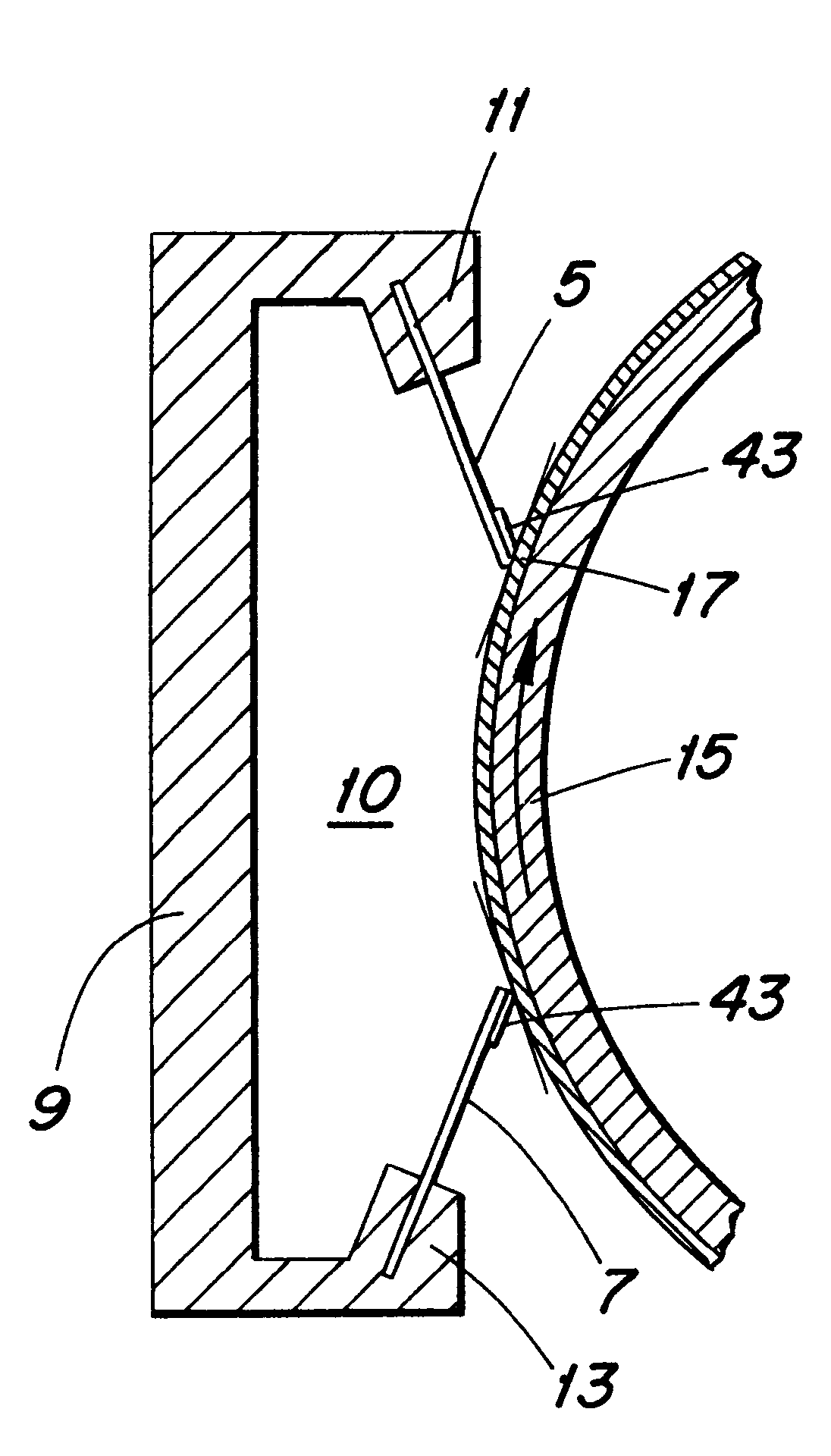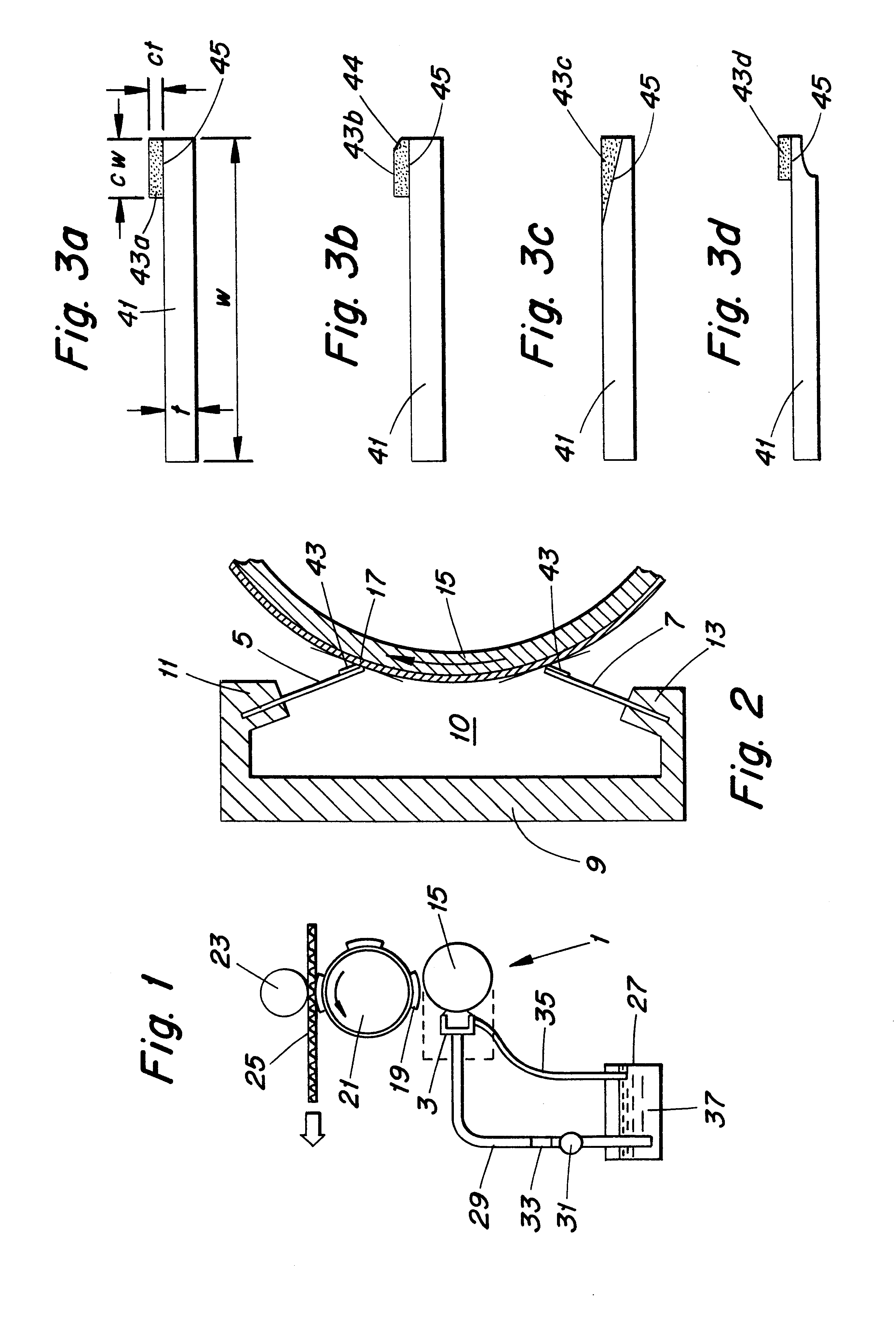Doctor blade
a blade and blade technology, applied in the field of blades, can solve the problems of reducing the productivity of printing process, unfavorable cleaning, and abrasion wear of the blade, and achieve the effects of reducing the smearing effect, improving the wear resistance of the blade, and eliminating the effect of smearing
- Summary
- Abstract
- Description
- Claims
- Application Information
AI Technical Summary
Benefits of technology
Problems solved by technology
Method used
Image
Examples
example 1
Abrasive Wear Resistance of Doctor Blades
This experiment was conducted in order to compare different brands of existing doctor blades with one selected ceramic material corresponding to the presently described findings.
A heavy wear trial was selected using the following parameters:
These conditions ware kept constant in all trials. For each test, the same blades wore chosen for both blade positions. The amount of wear was measured by width reduction of the blade. The table below presents the results.
The ceramic tipped blade, type I, consists of a 50 .mu.m layer on top of a 0.150 mm thick steel doctor blade (see FIG. 41a). The material used is an APS thermally sprayed Al.sub.2 O.sub.3 --ZrO.sub.2 ceramic in the weight proportion of 60% Al.sub.2 O.sub.3 --40% ZrO.sub.2.
The micro-Vickers hardness is about 850 HV0.3 and the hardness ratio compared with the ceramic roll is 0.6 to 0.7.
The width of the ceramic layer was 8 mm.
In can be seen from these results that the amount of blade wear wa...
example 2
Anilox Wear Survey
In another experiment the same ceramic blade type I as used in Example 1 above was run on an experimental flexo test system for survey of the anilox wear, by measuring the cell volume before and after the test. The conditions were as follows:
The cell measurement performed by the URMI technique gave the following results:
Before: 7.4.+-.1 cm.sup.3 / m.sup.2
After: 7.6.+-.1 cm.sup.3 / m.sup.2
example 3
Real Printing Survey
In a third experiment another composition of the blade material (ceramic type II), according to the invention was used on a regular basis in a web flexo machine during several months (3 shift printing unit). Here both wear of blade and survey of the anilox roll were evaluated. The conditions were:
During this period, 14 mio meters have been printed. The URMI results as well as the cell depth show some slight decrease, which can be explained by the fact that the anilox was new at the beginning and therefore may present some initial higher wear until the bridge between the cells are better defined. It can also be concluded that the ceramic tipped blade here were at the upper hardness ratio acceptable and some wear really occurs on the anilox roll.
In this case, the selected ceramic tipped blade (type II) was as follows:
The lifetime of the blade according to the invention reached 16 days non-stop as record and about 8 days in average.
Detailed Description of the Blade
A...
PUM
| Property | Measurement | Unit |
|---|---|---|
| thickness | aaaaa | aaaaa |
| width | aaaaa | aaaaa |
| width | aaaaa | aaaaa |
Abstract
Description
Claims
Application Information
 Login to View More
Login to View More - R&D
- Intellectual Property
- Life Sciences
- Materials
- Tech Scout
- Unparalleled Data Quality
- Higher Quality Content
- 60% Fewer Hallucinations
Browse by: Latest US Patents, China's latest patents, Technical Efficacy Thesaurus, Application Domain, Technology Topic, Popular Technical Reports.
© 2025 PatSnap. All rights reserved.Legal|Privacy policy|Modern Slavery Act Transparency Statement|Sitemap|About US| Contact US: help@patsnap.com


